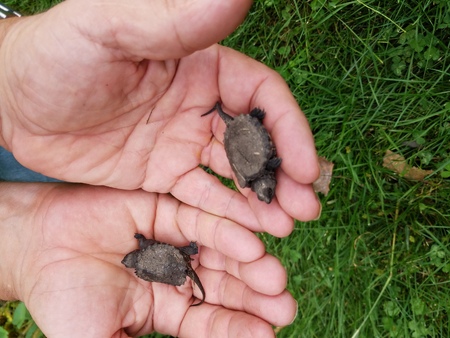
Thoughts on Local Snapping Turtles
After seeing pictures of the enormous Chicago River snapping turtle, we asked Good Natured columist Pam Otto, St. Charles Park District Outreach Ambassador, for her thoughts on the Chonkosaurus and the population of snapping turtles locally. Here is her response.
While the Chicago River Chonkosaurus continues to bask in the social media limelight, our local Fox River snapping turtles--some that are likely just as big as the Big City Chonk--are quietly going about their business of feeding, mating and, soon, egg laying. In fact it's been said that Chonkosaurus might have been a gravid female, gravid being the reptilian word for pregnant.
References say that common snapping turtles, Chelydra serpentina, are opportunistic omnivores, which means they feed on both plant and animal matter--usually whichever is most plentiful. In real life, these turtles will gulp down pretty much anything they can get their jaws around. Carrion is on the menu as are fish, birds, small mammals, invertebrates, amphibians and aquatic vegetation. All this food can make for some very large turtles. 
Their reputation for snapping is deserved, but it's a behavior most often used on land where they are away from familiar territory and more apt to feel threatened. When in water though, their default behavior is to avoid conflict and swim away.
What was most unusual about Chonkosaurus was not its size, but rather that it was seen basking, or soaking up the sun's rays. Many turtle species are big baskers but snapping turtles, not so much. Chonk might have been trying to warm up, and/or soak up the sun's UV rays, which is essential for vitamin D3 synthesis and calcium absorption.
One final thought... Many people, upon seeing a large snapping turtle, will describe it as an "alligator snapper." However that species, Macrochelys temminckii, is a more southern species that prefers oxbow lakes, reservoirs and deep pools of large rivers. Alligator snapping turtles are endangered in Illinois.

